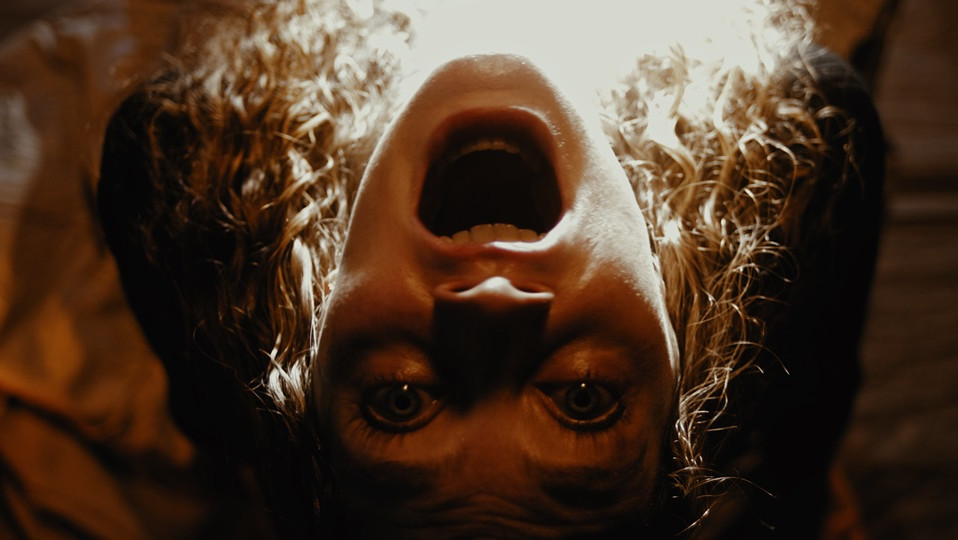Despite movie sound having been introduced almost 100 years ago silent films still have a palpable influence in modern cinema. Especially in horror movies.
In this article, we will look at several filmmaking techniques that were used in silent horror films. As well as how their influences can be seen in the modern horror landscape.
Jump Scares
Yes, even without sound some early horror films do feature proto-jump scares by having long build-ups to sudden cuts to images intended to scare audiences. Think of Orlok’s appearance outside the door (Nosferatu (1922)) and the Phantom’s facial reveal (The Phantom of the Opera (1925)). These scenes formed the beginning of a genre staple.
The introduction of startling loud sound stings to accompany the scare (Cat People (1942)) greatly added to the technique’s impact. Many modern horror audiences claim a dislike for jump scares, however, they can still be effective. With the best ones relying on building suspense and anticipation rather than using a loud noise for cheap shocks. Just like the old silent horrors.
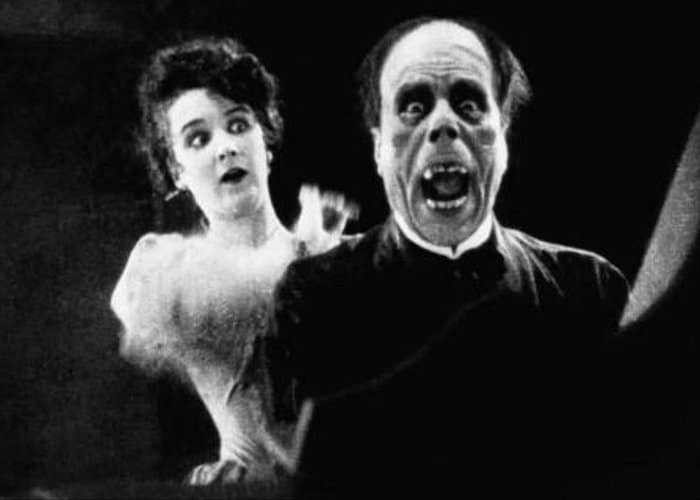
Uncommon Shots
There was a lot of experimentation with how early films were shot. Some horror films used drawn-out wide shots to allow audiences to see everything in a film’s world (The Cabinet of Dr Caligari (1920). Other films used shots to place us in a character’s perspective or to break a scene’s standard framing (Nosferatu).
These techniques are now common in modern horror. Elongated shots help to build up tension. POV shots (among others) place us in a character’s perspective and build empathy or distrust. And the experimentation with shot types is done to promote a sense of unease. Additionally, the deployment of more mobile camera movement has enabled modern filmmakers more freedom to create shots that surprise audiences.
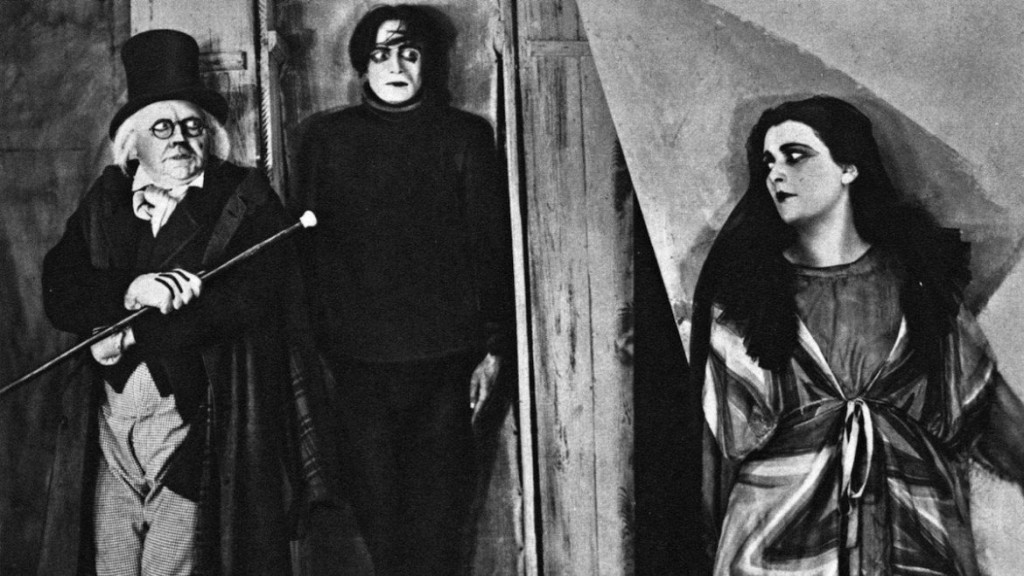
Shadows
Shadows have always been a great horror visual as they represent fear of the unknown. Thus they were a perfect tool for silent horror’s visual language. One of cinema’s most famous images is Count Orlok’s shadow ascending the stairs. Through the simple use of lighting to lengthen Max Schreck’s shadow Nosferatu makes Orlock into a horrifying unknown presence.
Shadows continue to be effectively used today. Whether it be indicating the imposing nature of villains like the Tethered or encouraging audience paranoia (The Woman in Black). But the advance in effects work also means shadows can be transformed in more ways than ever. Thereby allowing the cinematic fear of the unknown to be pushed even further.
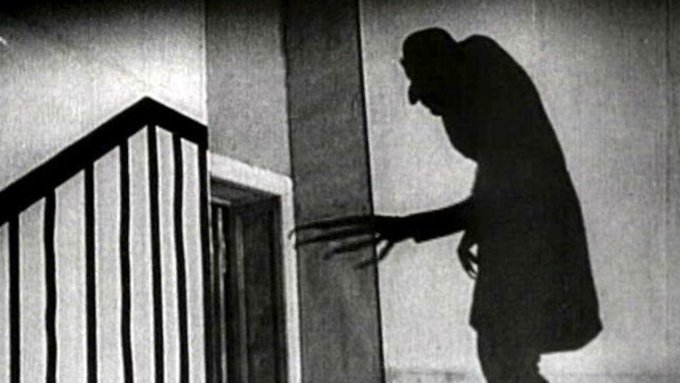
Metaphorical Sets
German Expressionism was a huge part of early horror cinema. Among other things, it focused on creating art that externalised the anxiety permeating post-WWI Germany. Leading to set design that felt exaggerated, warped and unreal. Which helped to make viewers uncomfortable and allowed the more fantastical narrative elements of films like Cabinet of Dr Caligari and The Golem (1920) to feel less out of place.
Although many horror films now aim to capture a more realistic atmosphere the expressionist era still taught the genre that displaying internal emotions through the use of sets can greatly impact audience reaction. Think the expansive well-dressed sets of Hereditary invoking a doll’s house. Or Maud’s creepy, enclosed and dark apartment in Saint Maud.
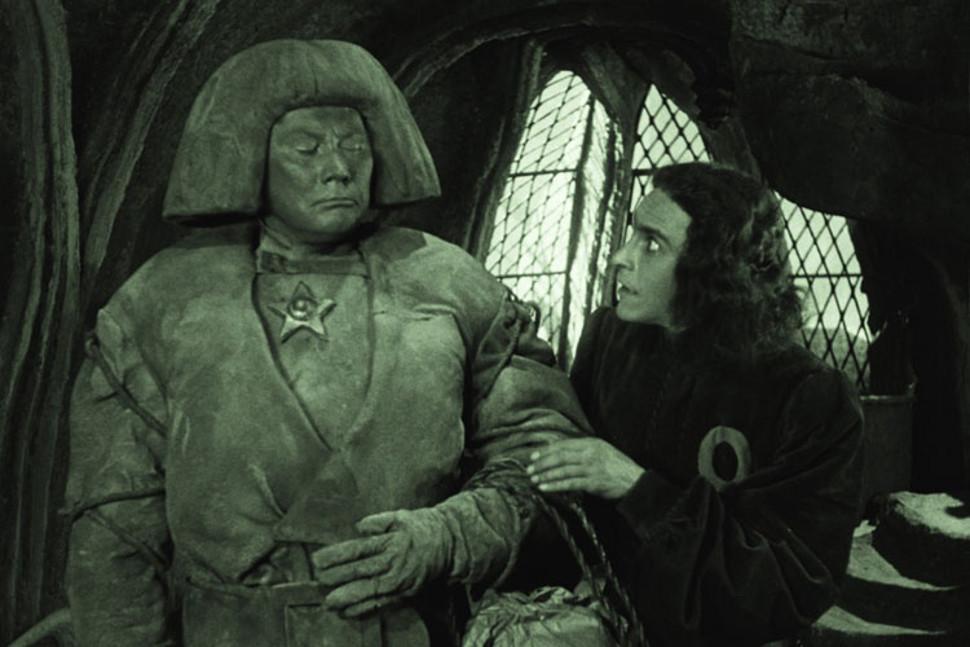
Mixing Styles
Finally, silent horror also began blending stylistic devices to add a feeling of realism to their narratives with Haxan (1922). This film blended dramatised scenes with documentary techniques such as providing factual statements on title cards and showcasing historical artifacts in the manner of a lecture. Making the film’s subsequent dramatic parts feel like a dramatisation of factual material rather than a horror film.
Nowadays horror films utilise many other factual presentation techniques to make them appear more realistic. Such as using documentary footage (Dawn of the Dead (2004)), disclaimers/facts to invoke real people/events (The Conjuring and Tigers Are Not Afraid) and the employment of cinematography and performances meant to evoke news footage (found footage films). Techniques all stemming from Haxan’s inspiration.
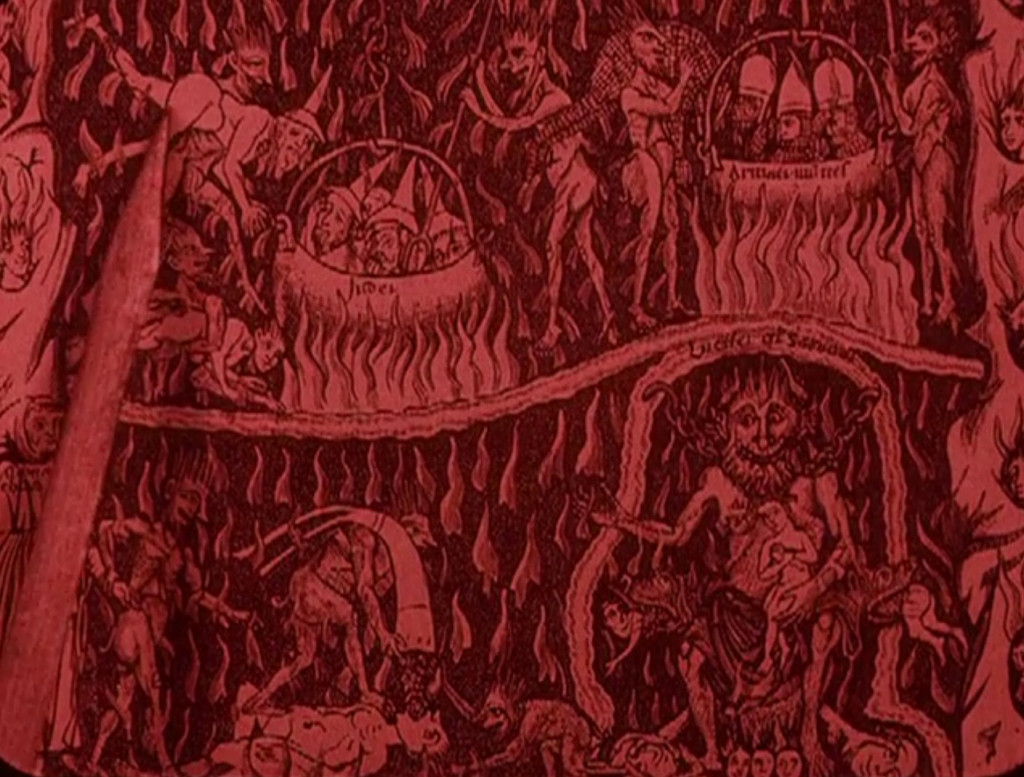
Those are just some ways silent horror techniques have influenced the modern horror landscape. So if you think silent horror can never capture the scariness of modern films remember that silent horror helped pioneer many ideas modern horror films use to frighten us.
Also Read: Horrors On Horror Sets





